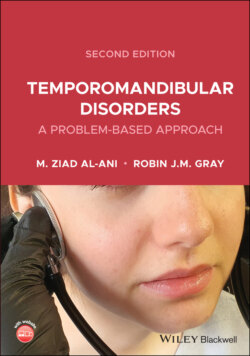Читать книгу Temporomandibular Disorders - Robin J. M. Gray - Страница 63
Pathway of jaw opening
ОглавлениеStand in front of your patient and ask him or her to repeatedly open and close the mouth as far as comfortably possible. Carefully watch the pathway and range of jaw movement. You can learn a lot from looking!
The mandible can open in a straight pathway or with a transient or lasting deviation. The mandibular pathway can be observed by standing in front of the patient and asking the patient to repeatedly open and close the mouth. Limitation or deviation of mandibular movement can be caused by two principal factors: either pain in the mandibular muscles or TMJ, or a physical obstruction to movement. Much can be gained from examining the patient slowly opening and closing the mouth (Figure 3.3).
Figure 3.3 Diagrammatic representation of mandibular movements.
If the pathway is straight throughout the whole range of mandibular movement, this indicates that both joints are acting synchronously (Figure 3.3a).
If there is a deviation to one side and then back to the midline, or alternatively first to one side then across to the other and back to the midline, with the mandibular incisal midline coinciding with the maxillary incisal midline at maximum opening, this would imply that there has been a temporary obstruction to smooth mandibular movement, possibly due to disc displacement with reduction (Figure 3.3b).
If the mandible moves obliquely from the start of the opening cycle to the end of the opening cycle, this may imply that there are adhesions within the joint, with one condyle moving less well than the other throughout the range of movement (Figure 3.3c).
If the mandible moves vertically during the first phase of movement and then has an abrupt lateral deviation, this could imply that there is disc displacement without reduction. In this instance, the mouth opens normally until the head of the condyle on the affected side encounters the disc in the unexpected and displaced position. Further translation of the condyle is prevented, thereby resulting in marked lateraldeviation (Figure 3.3d).
Let us now consider the features of lateral movements. If there is disc displacement without reduction on one side and not the other, let us assume that this is the right side; the patient will be able to move the mandible to the right very much more freely than to the left because, on right lateral excursion, the right condyle pivots in the fossa and lateral jaw movement is attainable. If, however, as is usually the case, the intra‐articular disc is displaced anteromedially, lateral movements of the mandible to the left side will be reduced because the condylar movement will be blocked by the disc, thereby severely limiting mandibular excursion in this direction.
